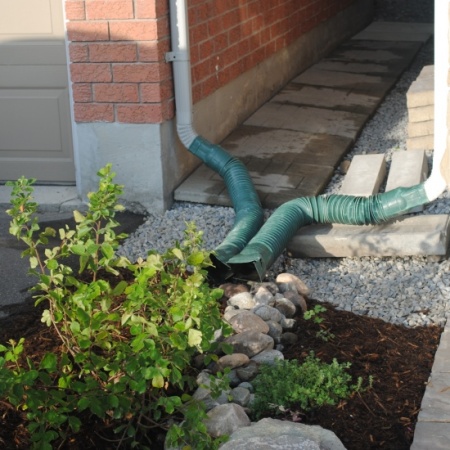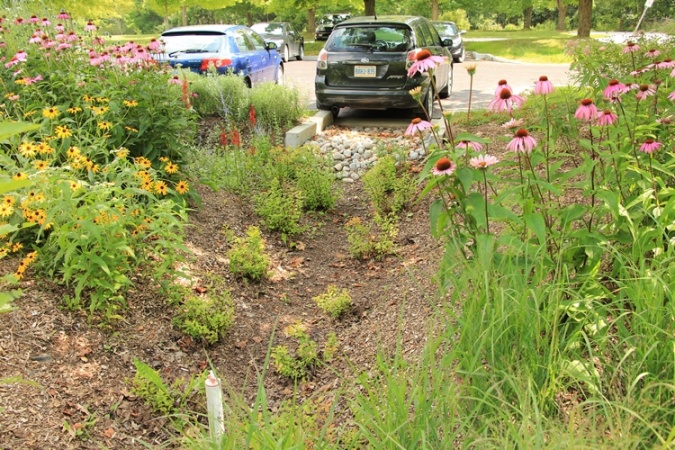Difference between revisions of "Rain gardens"
Jump to navigation
Jump to search
Jenny Hill (talk | contribs) |
Jenny Hill (talk | contribs) |
||
| Line 99: | Line 99: | ||
===See Also=== | ===See Also=== | ||
<ul> | <ul> | ||
| − | <li>[[ | + | <li>[[Bioretention Cells]]</li> |
| − | <li>[[ | + | <li>[[Downspout Disconnection]]</li> |
</ul> | </ul> | ||
---- | ---- | ||
Revision as of 14:54, 21 June 2017
This article is about planted installations designed to capture surface runoff in an amended soil.
For more highly engineered systems, see Bioretention Cells.
Overview[edit]
Rain gardens are the
Rain gardens are ideal for:
- Capturing the flow from disconnected downspouts
- Community design/build projects for raising awareness
The fundamental components of a rain garden are:
- An amended soil mix
- Suitable planting
Additional components may include:
- A splash pad of rocks to prevent the downspout flow from eroding the soil
- An overflow channel to another are of garden
Planning Considerations[edit]
Planning Content
<panelSuccess>
</panelSuccess>
Design[edit]
Design Content
<panelSuccess>
</panelSuccess>
Performance[edit]
Performance Content
<panelSuccess>
</panelSuccess>
Incentives and Credits[edit]
In Ontario
City of Mississauga
The City of Mississauga has a stormwater management credit program which includes RWH as one of their recommended site strategies[1].
LEED BD + C v. 4
SITES v.2
See Also[edit]
External Links[edit]
| SEND US YOUR QUESTIONS & FEEDBACK ABOUT THIS PAGE |

